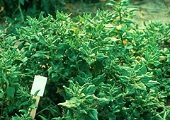While I cannot help you with your other questions, I've tried to remove the hulls from rice. Oh man, never again. I beat it, I drowned it, I tried to bite them off, I tried mortar and pestle, I stuck it in the microwave .. there is nothing that I did not try to get those hulls off. I gave up on the rice and the romantic dream of doing it by hand as they used to do it in olden times. Here is a reasonable article and there are some rice huller attachments to some smaller hand mills.
https://survivalblog.com/how_to_winnow_de-hull_and_clea/
Generally for storage in the tropics we store in a freezer because it is just too easy to get our harvest contaminated with critters.
Amaranth stores well in glass jars sufficient for a season.
Corn, parched and ground to a finer consistency for polenta and it is best fresh. Parching is not generally necessary although the taste is way nicer and of course it cooks up quicker. A good hand mill is the thing to have but my husband keeps threatening to put a motor on ours. We take turns ... 100 turns each (grins).
This all should give you at least a start on post production of grains.






